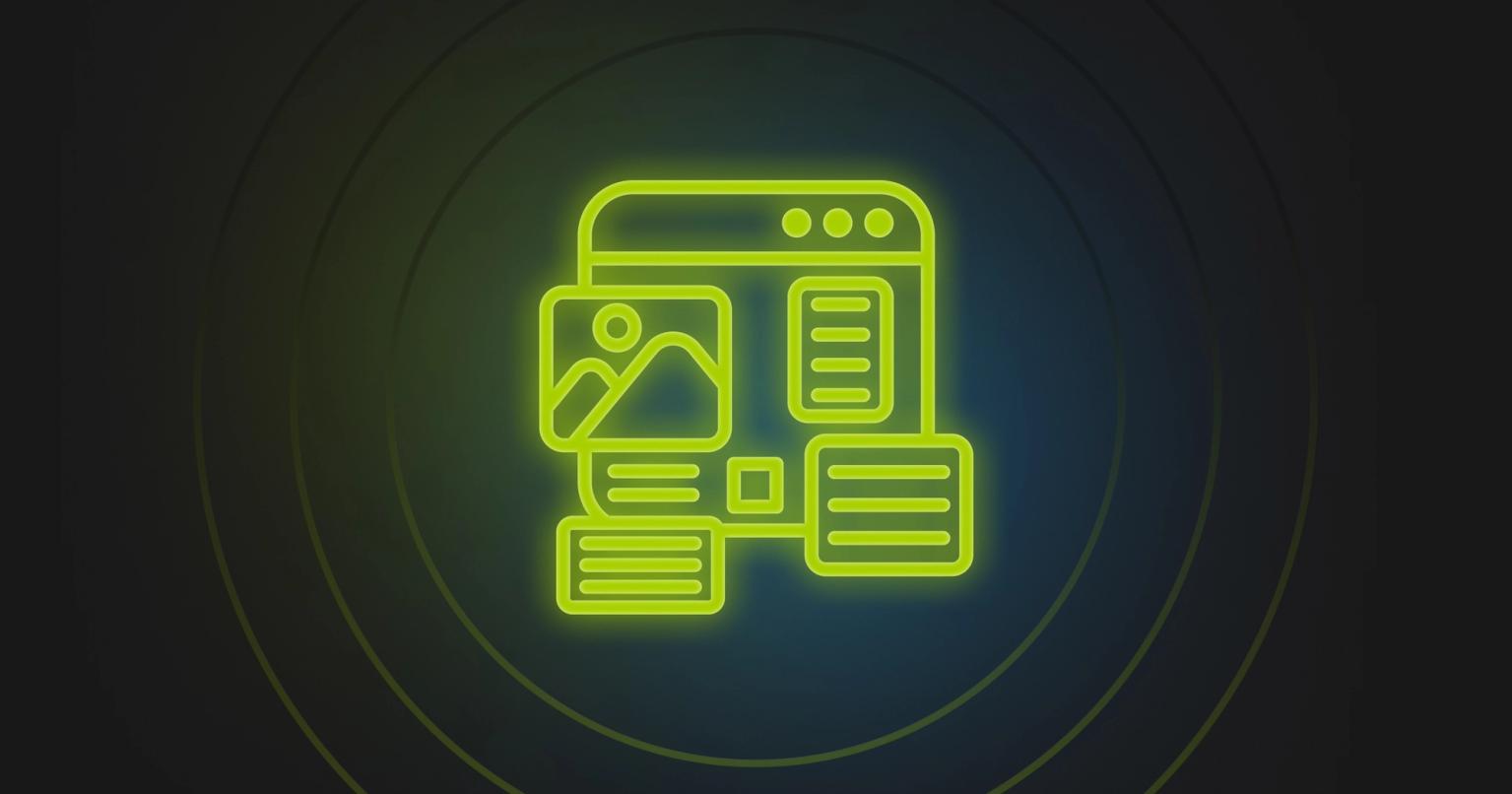Beginner's Guide to Self Serve Marketing

Summary
Discover how no-code tools remove bottlenecks, speed up campaigns, and boost creativity for modern marketing teams.
Nothing kills marketing creativity quite like bottlenecks, bureaucracy, and external dependencies. This web of dependencies can catch marketers up, delay campaigns, and stifle creativity.
Marketing teams would agree that their desires are relatively straightforward - it's clear what marketing wants. In most cases, this means bringing a campaign to life through asset creation, database organization for segmentation, launching advertisements, and running analytics. But the process of bringing a campaign idea to life is where bottlenecks start to emerge.
Independence is a key tenet of modern marketing, and relying on other teams or external partners can sometimes represent a hurdle. This is especially true in the context of technical hurdles.
The market clearly shows demand for solutions to these problems. The MarTech market is expanding every year, picking up speed. The marketing independence revolution has been underway for several decades, but the ideas and tenets of self-service marketing are still revolutionizing campaign execution. In this post, we'll explore self-service marketing - what it is, how it can help you, and the future trends shaping its development.
Defining True Self-Serve Marketing
What makes a platform truly self-service? The answer lies in several core characteristics, starting with the ability to transfer capabilities to marketing teams without requiring new technical expertise.
This transfer depends on accessibility - having a great user interface and capabilities that allow marketers to perform complex operations without compromise. Basic platforms often fall short here, failing to provide the robust capabilities that marketers need.
Built-in intelligence is another crucial component, with system defaults and templates that guide users toward best practices. Features like contextual help, brand guardrails, and automated quality checks play a vital role.
Integration capabilities are essential. The MarTech universe is expanding at galactic speeds, so marketing software can't exist in isolation - it must integrate with the entire marketing tech stack. As any marketer knows, we use numerous software tools daily.
Marketing software must balance governance and creative freedom. This means providing appropriate but safe levels of access without compromising security or introducing errors. Simultaneously, platforms need to enable innovation beyond fixed templates, offering modular or component-based design systems and workflows that align with best practices.
The best self-service platforms provide clear guardrails while enhancing creativity and enabling campaign launches. Traditional dependencies aren't inherently problematic, but they can create bottlenecks that delay campaigns and limit creativity.
Development resources are often limited and time-consuming. No-code tools like Knak, which provide visual page or email designers, can remove key barriers for marketing teams.
Designer resources in self-service platforms often create guardrails through customized templates or modular design systems. These can be configured with safeguards that enable freedom and creativity without risking brand integrity. Technical integrations that connect via APIs and one-click interfaces ensure new platforms fit seamlessly into the MarTech stack without creating additional silos.
Data analysis has evolved too - from needing dedicated analyst teams to having intuitive reporting platforms at our fingertips. Self-service has also sparked the evolution of specialized skill sets. MarTech professionals need to excel at orchestrating multiple platforms and understanding the full marketing tech stack. While coding isn't necessary, understanding how platforms work, their limitations, and capabilities is crucial.
Many platforms like Pardot or Marketo offer certification programs that help users progress from basic activities to complex operations with significant business impact. Modern marketers also need data skills - access to data requires understanding how to use it effectively and interpret metrics meaningfully.
We see this specialization in modern marketing roles like marketing operations, revenue operations, and campaign operations. Self-service doesn't eliminate the need to learn and master platforms, but it removes significant barriers to entry.
The Four Pillars of Self-Service Marketing Platforms
Let's take a look at the four pillars of self-service marketing platforms:
- Technical Accessibility
- Operational Independence
- Customization Capabilities
- Platform Learnability
Technical Accessibility
At its core, self-service platforms don't require highly technical knowledge or returning to school for a new discipline. You can start with a user interface that enables sophisticated operations through an accessible framework. No-code editing tools help create assets, and this revolution has reduced barriers to entry for critical marketing functions.
The tools themselves may still offer complexity and sophistication. Marketo exemplifies this balance - it enables complex operations across the campaign lifecycle, from data management and automation to campaign asset management and sales-marketing coordination. Yet it builds on existing skills rather than requiring entirely new ones. While expertise matters, the platform remains accessible to most users.
Operational Independence
The marketing independence revolution centers on direct control over key digital marketing activities. This includes launching campaigns and assets, running tests, optimizing based on results, managing data collection, setting up integrations, and handling asset deployment.
Ownership of the entire process defines self-service platforms. This spans the complete campaign development lifecycle - from ideation and project management through approval chains and built-in quality checks.
Customization Capabilities
Templates provide an excellent starting point, helping marketers learn the platform and achieve quick results. Better platforms enable users to create tailored, reusable templates across the platform. Knak demonstrates this through modular templates - you can use complete newsletter templates or combine pre-branded, pre-approved elements to create new emails.
Enterprise organizations need additional features like brand governance, asset management, version control, and collaboration tools. These capabilities enable true self-service and independent marketing operations.
Platform Learnability
Often overlooked but crucial, platform learnability determines how accessible the system is to marketers, while allowing for specialization and expertise. The platform should be intuitive, with a user experience that makes sense and offers a graceful learning curve for quick deployment - no one wants to spend weeks studying documentation to unravel a complex system.
Marketers focus on getting results, primarily through launching campaigns. The platform should scale in complexity - making simple tasks easy while building toward more sophisticated workflows. This progression should feel natural, using foundational building blocks to create complete solutions.
Self-Service Marketing Tools and the Creative Multiplier Effect
Creativity powers marketing strategy, and self-service tools unlock this creativity by helping marketers launch campaigns effectively. Speed acts as a catalyst - the ability to quickly implement, test, and design assets is a game-changing capability.
Reducing execution time helps marketers stay in their creative zone instead of getting stuck in technical and design delays. This connects directly to the concept of flow. When someone's in their creative flow, the ability to see a project through from start to finish without unnecessary delays makes all the difference.
The psychological benefits of direct control shouldn't be underestimated. Having ownership over the entire process, combined with confidence in execution and freedom from technical barriers, brings real benefits to marketing teams. This ownership extends to system stewardship, ensuring marketing plays a key role in crucial areas like customer data management. Since data is everyone's responsibility in an organization, and marketing collects and integrates vast amounts of data across platforms, their stake in this process is vital.
Rapid iteration and testing represent another crucial advantage. Time to market can make or break opportunities, and more campaign launches mean faster learning cycles. These data-driven improvements compound over time, enhancing marketing efforts and outcomes. We see this evolution in how A/B testing has transformed from a special event to a routine part of marketing operations, continuously providing insights for improvement.

The Evolution of Self-Service Marketing
If we could pinpoint a moment when self-service marketing technology took off, it would be October 23, 2000, with the launch of Google AdWords. This marked a turning point in digital marketing history. Over the past two decades, self-service has grown exponentially, becoming one of the most flexible and accessible marketing formats.
The Shift from Dependencies to Independence
Self-service marketing eliminated the need for intermediaries, allowing business owners to directly manage their advertising campaigns and other marketing activities. Before this shift, marketing teams relied heavily on IT, developers, manual efforts, and simple platforms. The transition brought tools that marketers could use directly to accomplish their objectives.
The Rise of No-Code Revolution
The popularity of self-service marketing tools is evident in ChiefMarTec's annual MarTech vendor map, which shows exponential growth each year and continues to accelerate.
We're seeing the rise of no-code and visual environments to accomplish objectives. Tools like Knak lead this revolution, introducing drag-and-drop functionality for building common marketing assets like landing pages and emails. They help teams develop component libraries with modules to use in marketing assets, ensuring brand consistency regardless of who creates them.
AI: The Next Frontier
This approach enables marketing teams to move faster and express more creativity. Workflow building and direct data manipulation through marketing automation platforms have transformed self-service marketing, offering complete control over the campaign creation process from initial idea to post-campaign analysis.
AI presents an exciting new frontier in self-service marketing. Combined with no-code tools, it can transform marketing operations, applying to creative work, routine tasks, data analysis, and automation. The future of self-service MarTech looks promising - the fusion of existing technologies with artificial intelligence will provide more options than ever before.
Scaling and Efficiency
This evolution should make campaign launches and team management easier while enabling better scaling of efforts. For example, teams can implement real-time personalization at an individual level using AI for data analysis. It can also streamline workflows and processes, accelerating approvals and improving team coordination.
The Modern Marketing Team
The marketing team's role has evolved significantly over the last 25 years, becoming increasingly diverse. The emergence of marketing operations and revenue operations roles reflects this change. Marketing now requires technical ability - not necessarily coding skills, but the capability to operate advanced platforms effectively.
This trend continues as responsibilities evolve from execution to strategy. Teams spend less time on technical tasks and more on creative direction, using enhanced analytical capabilities to optimize campaigns and workflows. Marketers are transitioning from specialists to orchestrators, coordinating data across multiple platforms to power automation, AI-driven processes, and advanced workflows.
Maximizing the Value of Self-Service Marketing
Self-service marketing is embedded in modern digital marketing. Calling a tool self-serve or not is somewhat redundant - all tools that marketers use extend some semblance of self-service.
The key is identifying areas within your marketing process that have existing bottlenecks or require additional assistance from teams outside of marketing. Embracing self-service means identifying areas in your business that can be optimized and evaluating your team's readiness to take on those tools.
I remember the decision to deploy Marketo at one of my previous jobs. It was a big moment moving off of a simple email platform to a more robust system that integrated with our CRM. It took time, but it was absolutely worth it in the end.
Having an evaluation of what you want out of these software is critical. Are you looking to save time, speed up campaign execution, increase coordination across platforms? Having a roadmap for your marketing processes and how you can improve them is key to building a center of excellence.
It also represents an opportunity for individuals within teams to step up. For many people, stepping into a specialized role like marketing operations can boost their career, allowing them to manage new software that's critical for team functionality and driving benefits.
The No-Code Advantage
One of the most obvious areas for many businesses to update their digital marketing processes is integrating with no-code tools. While development still has a strong role in many marketing activities, developing emails and landing pages can sometimes be overkill to ask your developers or designers.
Marketing campaigns are often high velocity and somewhat disposable - you launch this week, then the following week, and the week after that. Keeping up with the design requirements of various landing pages and emails can be a real headache. Putting this control directly into the marketing team's hands allows marketing to execute quicker and with more creativity, while saving design and development resources for heavy lifts like homepage designs or SEO optimization.
In some ways, self-service marketing is a holistic approach that can help your entire organization become more efficient and more streamlined. If you're interested in joining the self-serve revolution, check out Knak, a self-serve no-code landing page and email builder.












